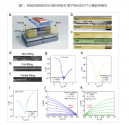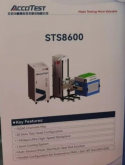Zhang Zhiyong's research group at the School of Electronics has realized low-power tunneling transistors based on perovskite-doped carbon nanotubes
Silicon-based complementary metal oxide semiconductor (CMOS) technology has entered the 5-nanometer technology node in 2022, and the characteristic size of transistors is close to the physical limit. Seeking new materials and new principles of semiconductor integrated circuit technology has become the focus of attention in academia and industry. Carbon nanotubes (CNTs) have excellent electrical properties, quasi-one-dimensional lattice structure, high carrier mobility and other characteristics. They are one of the ideal semiconductor channel materials for building new CMOS transistors and integrated circuits. Unlike traditional silicon-based semiconductor materials, carbon nanotubes are composed of CC sp 2 covalent bonds, have strong chemical stability, and are difficult to achieve controllable and stable doping, which greatly limits the electrical control freedom of carbon-based devices.

Recently, the research groups of Professor Zhang Zhiyong from the Carbon-based Electronics Research Center of the School of Electronics, Peking University, and the Laboratory of Physics and Chemistry of Nanodevices of the Ministry of Education, Professor Jin Chuanhong from Zhejiang University, and Researcher Zhu Maguang from Nanjing University have successfully filled one-dimensional perovskite materials (CsPbBr 3 /CsSnI 3 ) into carbon nanotubes using the gas phase/liquid phase self-assembly filling technology of carbon nanotubes, regulated the electrical properties, and successfully constructed internally doped carbon nanotube CMOS transistors. More importantly, the team designed and demonstrated for the first time a broken-gap tunneling transistor (TFET) based on a half-filled perovskite-carbon nanotube (CsPbBr 3 /CNT) coaxial heterojunction. The room temperature subthreshold swing of the device is about 35 mV dec -1 , and the on-off current ratio is greater than 10 5 , demonstrating the application prospects of one-dimensional perovskite-doped carbon nanotube materials in the construction of high-performance and ultra-low power integrated circuits.

